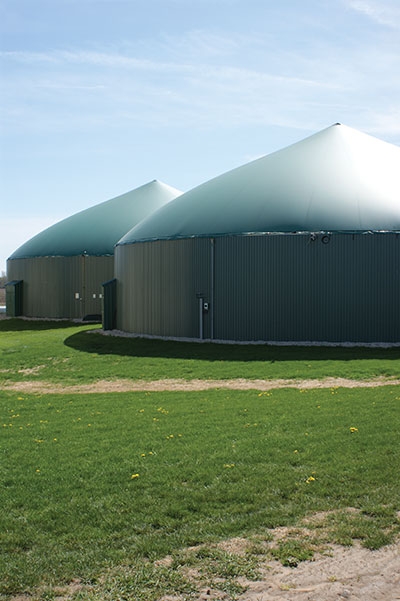
Features
Anaerobic Digestion
Applications
Business/Policy
Dairy
Energy
Energy Production
United States
Biogas roadmap will foster innovation, revenue for dairy farms
September 10, 2014 by Manure Manager

The White House recently released a Biogas Opportunities Roadmap highlighting the economic and environmental benefits and potential for biogas systems in the U.S.
According to the roadmap, biogas systems offer a wide range of potential revenue streams, growing jobs and boosting economic development for communities, businesses and dairy farms. The systems work by recycling organic material — including cow manure and food waste — into valuable co-products such as renewable energy, fertilizer, separated nutrients and cow bedding.
To develop the roadmap, The White House worked with the dairy industry through the Innovation Center for U.S. Dairy, which was established under the leadership of dairy farmers, and U.S. Department of Agriculture (USDA), Department of Energy (DOE) and Environmental Protection Agency (EPA).
According to the roadmap, the USDA, DOE and EPA will take these steps to promote the development of biogas systems:
- Fostering investment in biogas systems: To help overcome barriers to the widespread investment in biogas systems, USDA will lead efforts to better understand and track the performance of anaerobic digesters, seek opportunities to broaden financing options, and review Federal procurement guidelines.
- Strengthening markets for biogas systems and system products: The Roadmap identifies activities that could strengthen the market for biogas systems and system products including energy and other value-added products. For example, dairy farms of all sizes could enhance their revenues through nitrogen and phosphorus recovery.
- Improving communication and coordination: USDA will establish a Biogas Opportunities Roadmap Working Group, including the dairy industry, to implement the strategies in the Roadmap, with a goal to identify and prioritize policies and technology opportunities by August 2015.
- Promoting biogas use through existing agency programs: Leveraging existing programs will provide a way to enhance the use of biogas systems in the U.S. by ensuring existing criteria for technical and financial assistance considers the benefits of biogas system, leveraging research funding, and strengthening programs that support the use of biogas for clean energy, transportation fuel, and other biobased products.
“On dairy farms, digesters can increasingly be part of the solution to manure management challenges and enhance our ability to sustain our farms for the next generation,” said Jim Werkhoven, a dairy farmer in Monroe, Washington, and chairman of Darigold, Inc.
Biogas systems could help the dairy industry, which contributes approximately two percent of total U.S. greenhouse gas emissions, to further reduce its carbon footprint. In 2009, the dairy industry established a voluntary goal to reduce its carbon footprint by 25 percent by 2020. The Dairy Power project is one of a portfolio of projects to help achieve that goal; it focuses on harnessing the value of manure and realizing the potential of biogas systems for U.S. dairy farmers.
“Dairy farmers are taking many steps to provide nourishing dairy foods and beverages that are responsibly produced,” said Tom Gallagher, chief executive officer of the Innovation Center for U.S. Dairy. “Biogas systems are one example of many technologies available to the industry today that help us continuously improve our stewardship and contribute to our communities.”